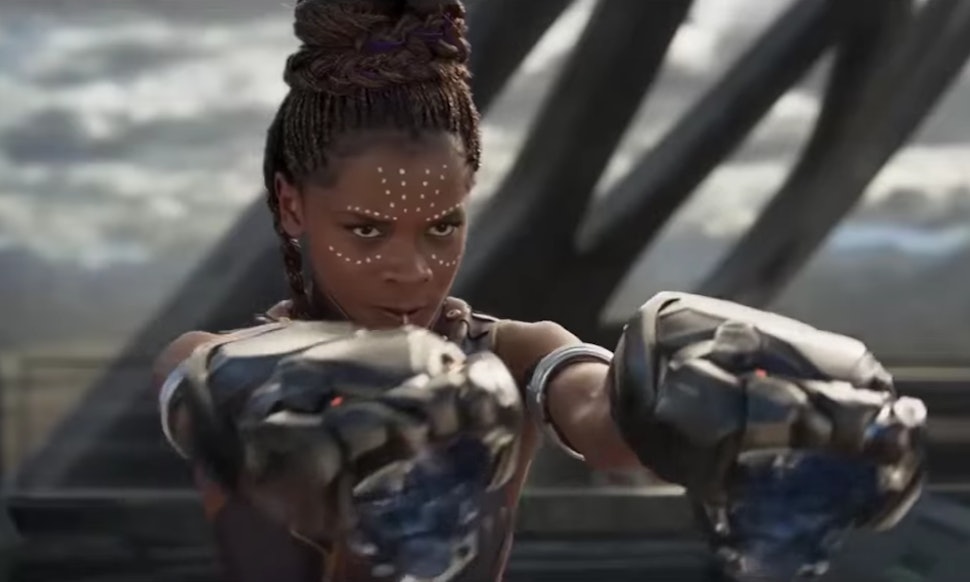The male gaze is almost impossible to evade. John Berger tells us in his “Ways of Seeing” that the way women are treated is a direct result of the way that men perceive them. The more attractive a woman is, the better she will be treated by the men around her. What’s more is that women often take on this practice of looking at themselves through the lens of the male gaze in order to at least have some power over their existence. If women can predict the way that men will see them, and then subsequently treat them, we can tailor ourselves to get a better result out of that. In Visual Pleasure and Narrative Cinema, Laura Mulvey says that, “The determining male gaze projects its phantasy on to the female figure which is styled accordingly,” ( 837). Women constantly put themselves through hell to better fit into the box of what society says is attractive. We starve ourselves, rip out our hair, and go under the knife, sometimes risking our health or even our lives because the male gaze tells us that if we’re not beautiful, we’re nothing.
 |
Jessica Rabbit, an impossibly proportioned cartoon
woman being observed by real life men. |
In the FX show, “Nip Tuck,” the lives of two white male plastic surgeons are chronicled.
In this scene, we can see one of the protagonists, Christian, telling a woman, Kimber, all the ways she is physically inadequate, and how she could be improved. The scene ends with Christian staring at the marked up, nearly naked, and distraught Kimber in the mirror, and uttering the chilling words, “When you stop striving for perfection, you might as well be dead.” That being said, the reason that this demonstration begins in the first place is because Kimber prompts Christian to show her how she can be perfect. Hooks supports Berger’s idea that women also take on the role of the male oppressor, towards themselves and also towards others. Hooks says, “We need to highlight the role women play in perpetuating and sustaining patriarchal culture so that we can recognize patriarchy as a system women and men support equally, even if men receive more rewards from that system,” (24).
If this wasn’t grim enough, Berger shows us that men also then throw blame and shame onto women who they deem to be vain. When speaking about Renaissance paintings, Berger says, “You painted a naked woman because you enjoyed looking at her, you put a mirror in her hand and you called the painting Vanity, thus morally condemning the woman whose nakedness you had depicted for your own pleasure,” (51). This almost begs to be compared to a very common problem that women face in our current society: when a man asks a woman to send an explicit picture, and then publishes this picture and shames the woman for having taken it in the first place. I can remember almost countless instances of female celebrities having nude photos published without consent, and yet cannot seem to recall even one instance of this happening to a male celebrity. This is because the male gaze deems the naked female body to be desirable enough to broadcast with or without consent, and yet simultaneously deems the woman, the subject of the photo, to be a slut.
The oppositional gaze has developed over a period of time to have different identities when coming from different groups. Hooks shows us that when slave owners punished enslaved black people for even looking at them, it made the gaze forbidden, and therefore a powerful act of rebellion when actively done. She says, “That all attempts to repress our/black people’s right to gaze had produced in us an overwhelming longing to look, a rebellious desire, an oppositional gaze,” (116) The first ways in which the black oppositional gaze manifested itself in creation was in “independent black cinema,” (117). This focused mainly on black males getting representation and having a voice to stand up against white supremacist suppression. The unfortunate casualty of this, however, is the black female. Since black men were long murdered for even an alleged glance at a white woman, the black male oppositional gaze took no care to represent white women in a positive way, and black women were scarcely found on screen at all, even more scarcely so in an accurate way.
This is a key example of why in feminist rhetoric and practice, white women and women of color can not be assumed to have had the same experiences, which is an assumption that is often made. Bell Hooks’ pointing out the difference between oppositional gazes and how the experiences of women differ so greatly, is something that just further establishes an idea which I am now familiar with, but which was absolutely foreign to up until about the end of high school. Often times, and mostly by white women, the idea is touted that no matter what, women must stick together. The problem with this is that it completely disregards countless issues that women of color face, where white women do not. Celebrity drama holds many examples of this unfolding for us to look at. Nicki Minaj has made a case against Taylor Swift for ignoring the bias that black women in the music industry are up against, and has publicly called out Miley Cyrus for appropriating black culture and then running for the hills when she could have been an ally. Looking at the way that Hooks lays out the differences between the portrayal of white and black women in early cinema is easy proof that feminism cannot be colorblind.
Works Cited
Berger, John, Dibb (1972). “Ways of Seeing.” London: BBC Enterprises
Hooks, Bell. The Will to Change: Men, Masculinity, and Love. Washington Square Press, 2005.
Mulvey, Laura, et al. Visual Pleasure and Narrative Cinema (1975). Afterall Books, 2016.












